10 Fun (and Powerful, and Essential) Facts for Pride Month
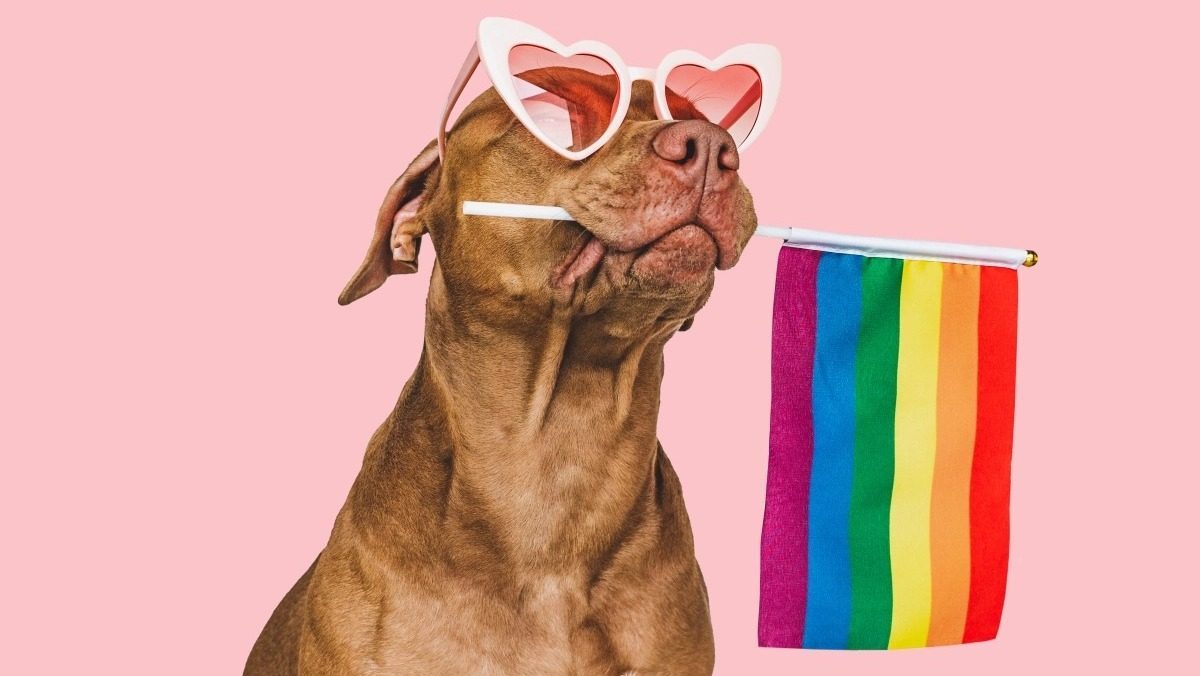
It’s been over fifty years since the Stonewall Riots birthed the modern LGBTQIA+ Pride movement, and as far as we’ve managed to come, there’s still a hell of a long way to go.
What began as a protest demanding our basic right to exist, openly and unharmed, and without being excluded from broader society, has evolved into a month of celebration, education, and continued protest on behalf of ourselves and our communities worldwide.
Though in some places Pride has become an overly corporate shell of its radical origins, centering partying and profit instead of activism, other cities’ Pride events remain true to its original purpose. And in those that don’t, grassroots, alternative Pride events focused on activism and low-cost, accessible queer celebration, are springing up to replace it. So, in honor of Pride month and its history, here are 10 of the most interesting Pride facts I could find.
1. It started with the Christopher Street Liberation Day March

In the wake of the Stonewall Riots, LGBTQ+ activists in New York, Philadelphia, Chicago, and LA were inspired to try a new form of activism, one that rejected the respectability-based, assimilationist approach gay and lesbian groups had previously taken. Organizers planned a march for the one year anniversary of the riots in New York and instead of applying the strict cisheteronormative dress code (dresses for women, suits and ties for men) that activist groups had imposed on similar events, or demanding the participants walk in silence, attendees were encouraged to present as they chose and be loud about it. Known at the time as The Christopher Street Liberation Day March, these protests, held in New York, Chicago, and LA, would become the first annual Pride marches, spreading across the continent and abroad.
2. The Stonewall Riots lasted for days

The Stonewall Inn was one of the few places where less “respectable” LGBTQ+ people could go to drink, socialize, and be themselves. While white, middle-class, cis and gender-conforming gay men and lesbians had a few somewhat safer options available, the rest of the community was left with Mafia-run establishments such as the Stonewall Inn as no one else was willing to serve them. Despite regularly bribing the police, raids on Mafia-owned places still happened, with the police engaging in both physical and sexual violence against the patrons.
The events of the 1969 raid on The Stonewall Inn pushed the local queer community past boiling point, and when a police officer assaulted a butch patron of the Inn in front of the gathering crowd, that crowd fought back. The riots lasted three days, changing the landscape of LGBTQ+ activism forever.
3. LA was the first city to grant Pride a permit, for a price
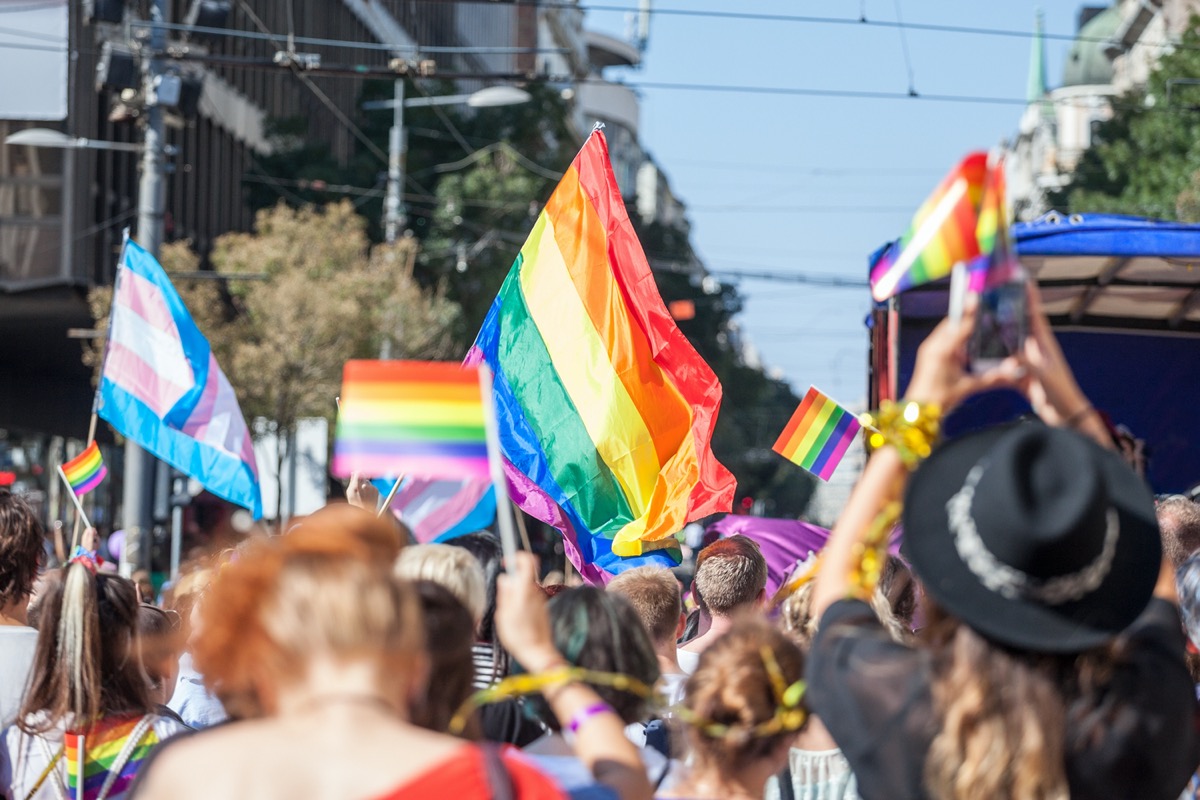
Los Angeles is proud of the fact that it was the first city to grant a permit to Gay Pride marchers. However, the city generally leaves out the obscenely high price it made the organizers pay to get it; a full $1.5 million. Bearing in mind this was all the way back in 1970, the equivalent of $12,121,701.03 in today’s money. It took the ACLU’s intervention on behalf of The Christopher Street West Association for the city to stop attempting to price Pride marches out of existence.
4. The Pride Flag originally had eight colors

Designed by activist and artist Gilbert Baker in 1978, the original Pride flag featured eight colors, not six. Commissioned by Harvey Milk, the first openly gay politician in the United States, that first flag measured 30 by 60 ft, was handsewn by Baker, and flew in United Nations Plaza on Gay Pride day (June 25th).
Baker chose the rainbow for his design because he felt it expressed the beauty, joy, diversity, and power of the LGBTQ+ community. He assigned his own meaning to each color: hot pink for sex, red for life, orange for healing, yellow for sunlight, green for nature, turquoise for magic, indigo for serenity, and violet for spirit.
Pink was the first color cut from later versions of the flag, and for purely practical reasons. Baker wanted to mass produce the flag and suitable hot pink fabric was incredibly difficult to get hold of. Turquoise met a similarly practical fate later when they needed to split the rainbow across both sides of the street for the 1979 parade and needed an even number of colors for balance.
5. Pride Month officially came into being in 1989
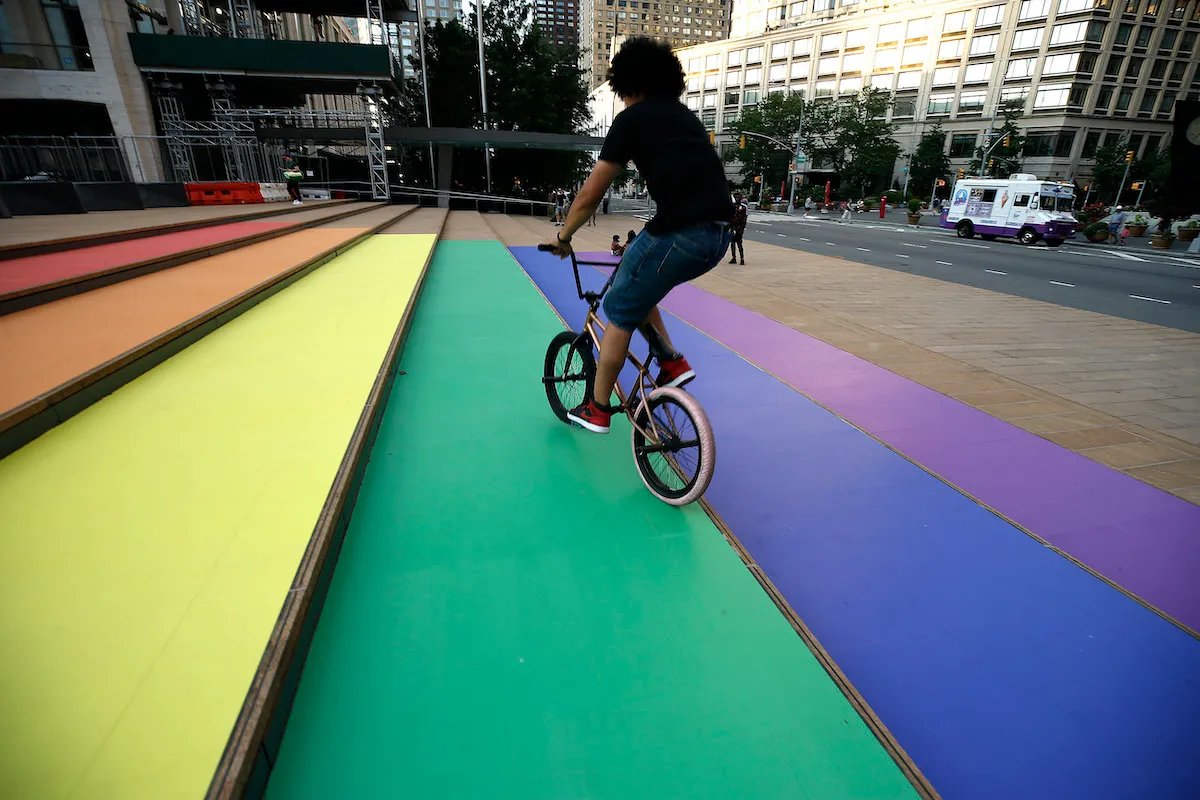
While Pride celebrations had spread over the days around the march right from the very beginning (the “gay-in” that culminated New York’s Christopher Street Liberation Day March in Central Park lasted for around a week), the first official mention of Pride Month that we have on record comes from a New York Times article 1989 about New York City’s then-mayor Ed Koch being heckled for declaring June “Lesbian and Gay Pride and History Month.” Bill Clinton would later recognize June as Gay Pride month, with Barack Obama referring to it by its updated name of LGBT Pride.
6. Not all cities hold Pride in June
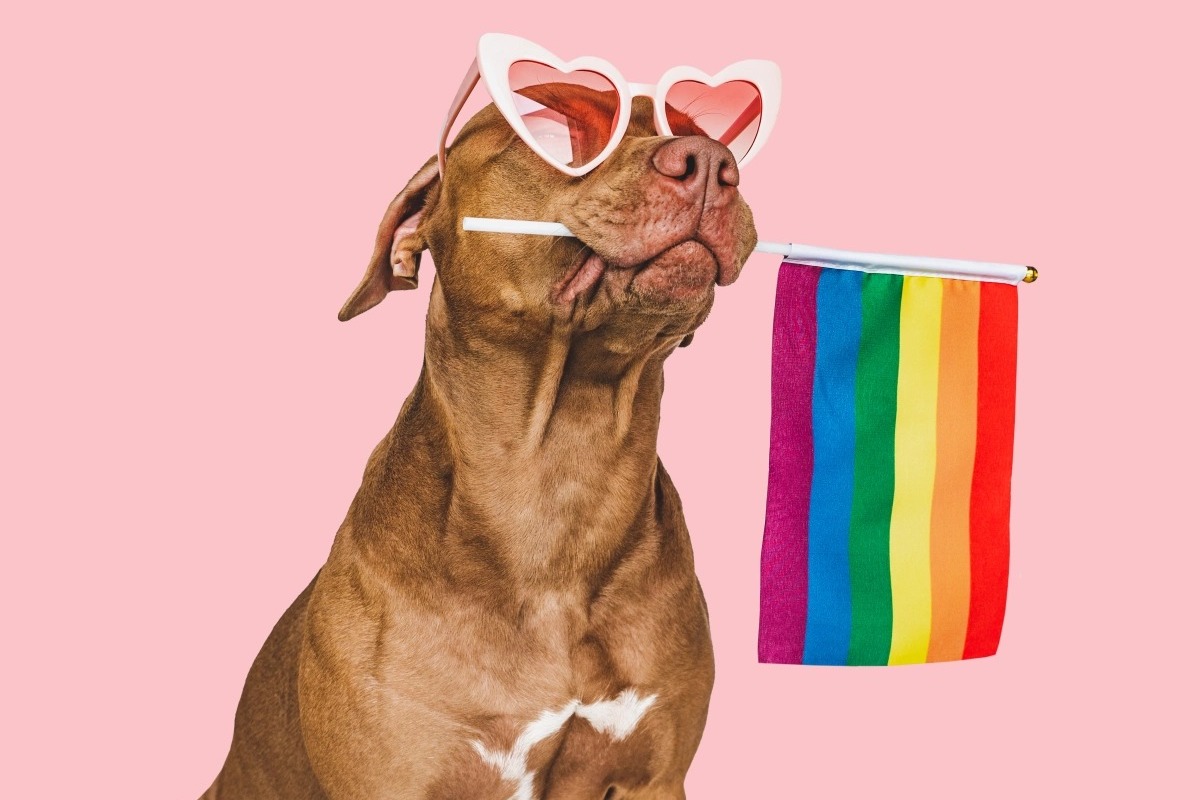
While most cities that host a Pride March do so in June this isn’t always the case. Sometimes when two cities are particularly close together, such as Edinburgh and Glasgow in Scotland, one will decide to host their Pride celebrations before or after the other’s so that they don’t clash and residents can attend events in both locations.
7. We almost ended up with Gay Power instead of Gay Pride

The slogan Gay Pride is attributed to gay activist Craig Schooner, but he very nearly went in another direction instead. When trying to come up with a name for their movement his initial thought was “Gay Power,” like the name of the Washington Square Park rally that had been held a few weeks after the Stonewall riots. However the lack of power the LGBTQ+ community had put Schooner off the name, and he eventually decided on Gay Pride because pride in yourself was something everyone could have.
8. Bisexual Activist Brenda Howard was named the “Mother of Pride”
The chief architect of New York’s Christopher Street Liberation Day March and its first anniversary march the next year, Brenda Howard was christened the “Mother of Pride” for her tireless work in making the events a reality.
A bisexual woman who was deeply embedded in both activist and LGBTQ+ circles, Howard was a veteran activist known as the go-to person for organizing protests and collective action. Howard’s activism was broad-ranging, covering everything from reproductive justice to the anti-war movement, and continued until her death in 2005—during Pride month. In addition to being the “Mother of Pride,” she was also the cofounder of New York’s Bisexual Network, working to meet the needs of that part of the acronym.
9. The first Trans Pride March was in 2004

Despite trans people, especially trans women’s, seminal role in both the Stonewall Riots and the early days of Pride, the mainstream Gay Pride movement often excluded them, sometimes by creating a hostile environment towards them at events and sometimes by outright banning their participation. In 2004, as the trial of teenage trans girl Gwen Araujo’s murderers was in full swing, an anonymous email began circulating among the trans community in the Bay Area, calling for a trans rights march. Despite San Francisco Pride’s previous history of transphobia and exclusion the organization decided to support the march, which is now an annual event.
10. Amsterdam Pride takes place on the water
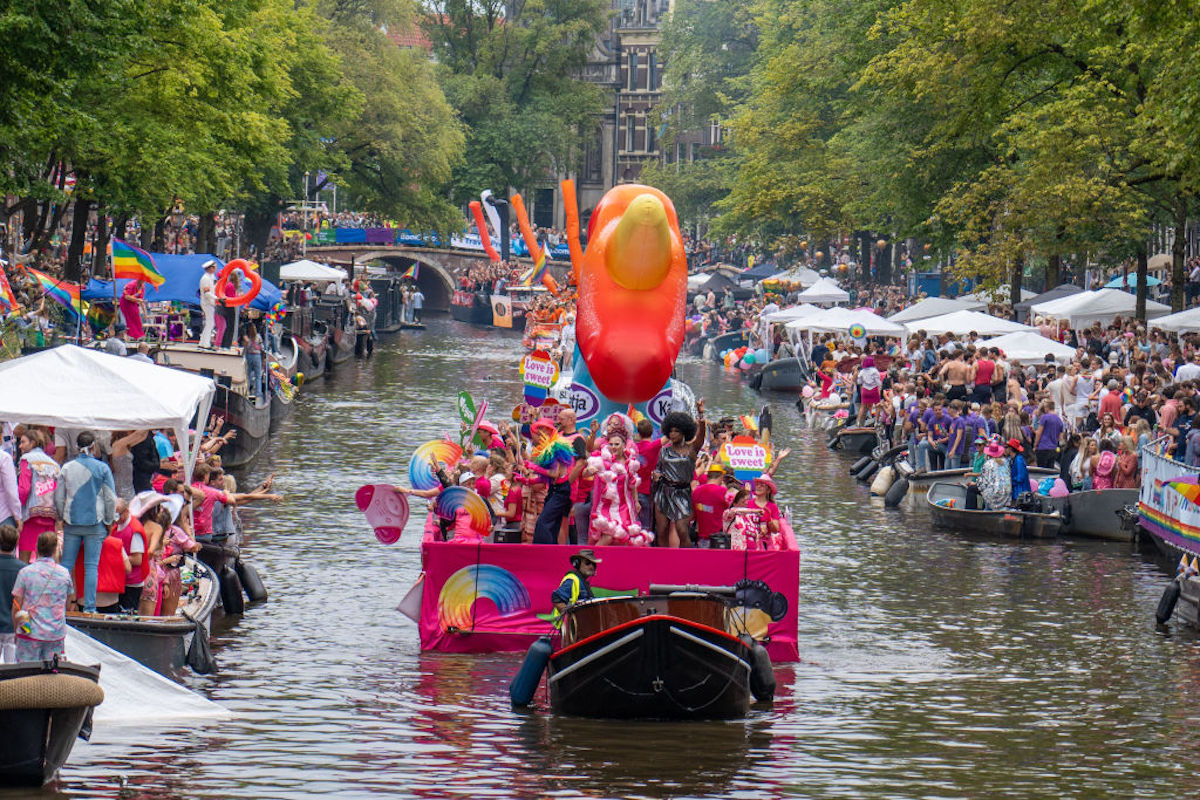
Amsterdam has been an LGBTQ+ haven since Holland decriminalized “same sex sexual activity” in 1811. While Amsterdam’s Pride festival lasts a full week, with street parties, sporting events, and all sorts of cultural activities happening across the city, the highlight has to be the Amsterdam Pride Canal Parade. Upwards of a hundred boats decked out like parade floats progress through the city’s historic canals in a truly unique Pride Parade you won’t see anywhere else.
Have a tip we should know? [email protected]
